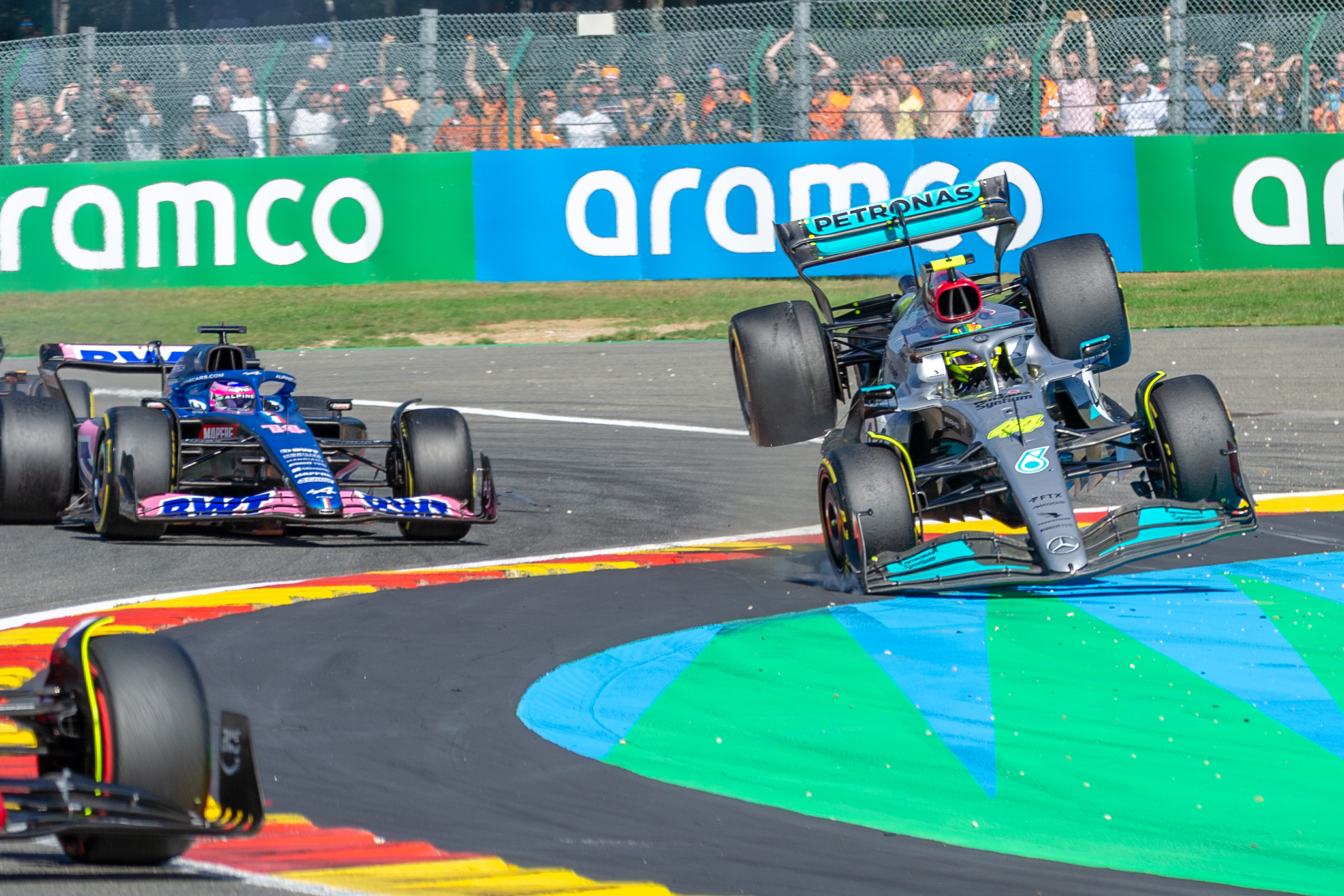Up Next

The Mercedes Formula 1 team has revealed Lewis Hamilton’s car sustained a 45g vertical impact after his first-lap collision with Fernando Alonso in the Belgian Grand Prix.
The clash happened at Les Combes on the opening lap, with Hamilton attempting to take second place around the outside of the entry part of the corner from the Alpine driver.
However, Hamilton did not give Alonso enough room in the right-hander and, as a result, his right-rear wheel drove over Alonso’s left-front and flicked the car into the air.
When world champions collide 💥#BelgianGP #F1 pic.twitter.com/x0SL4PPG20
— Formula 1 (@F1) August 28, 2022
Alonso described him as an “idiot” over the radio, with Hamilton accepting that he was to blame for not leaving the Alpine driver enough room.
The 45g impact occurred when the car landed in the runoff area, with Hamilton continuing at speed until he was told to slow down and stop later in the lap.
The impact activated the medical warning light, which means a driver must visit the medical centre. As Hamilton “initially refused”, according to FIA stewards, he was issued with a formal warning.
“It was a large, large impact,” said Mercedes strategy director James Vowles in a race debrief video released by the team.
“It was measured at 45 G on the SDR recorder in the car, which is very big on a vertical load.
“He will be OK, he will be back in Zandvoort fighting. I think primarily for him he is frustrated, frustrated that he had a very fast race car, and a podium was possible but he, like all of us, are here to fight and continue moving forward.”

Mercedes has yet to reveal the extent of the damage and whether it could lead to penalties given concerns about the power unit and also gearbox, the latter thanks to rule changes this year that permit four gearboxes per driver, per season rather than the previous six-races-per-gearbox rule that allowed changes after a retirement without a grid drop.
Vowles confirmed that the car lost coolant in the impact, which was what led to the instruction to retire. But he said the damage was still being checked.
“There’s enough photos floating around the internet to show just how high the car was and how it landed and the impact was large,” said Vowles.
“What we noticed almost immediately after the impact on the ground was a loss of coolant. You can actually see on the onboard of Alonso that coolant flying out towards him and then you started to see temperatures rise fairly quickly and that was the primary reason for stopping him on track.
“It will now take a few days to review all the components. Clearly there is going to be overloads to the suspension components and gearboxes and we need to make sure to understand the full extent of what’s required before Zandvoort.”




